I analyzed 20 million Apple Podcasts star ratings. Here’s what I learned.
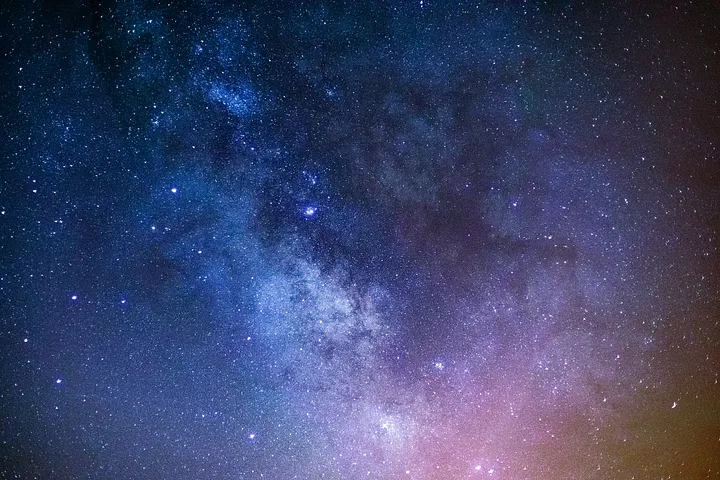
Here at Pacific Content, our clients often ask about star ratings in Apple Podcasts. I get questions like:
- “Our company’s podcast has 308 ratings. Is that good?”
- “Our average rating is 4.8 stars. Is that good?”
- “Our competitor’s podcast has more star ratings than us. Is that bad?”
I have a strong point of view on podcast ratings and reviews: they’re an important part of your show’s product packaging, and a form of social proof.
But I’ve never done any quantitative analysis of star ratings in Apple Podcasts.
Until now.
Earlier this month, I grabbed a dataset of 19,973,595 ratings across 1,307,258 shows in Apple Podcasts in the US. Then I crunched some numbers.
I was surprised by what I found.
Most ratings are 5-star ratings
Of the nearly 20 million Apple Podcasts ratings I analyzed, the vast majority (87%) are 5-star ratings. Just look at this breakdown:
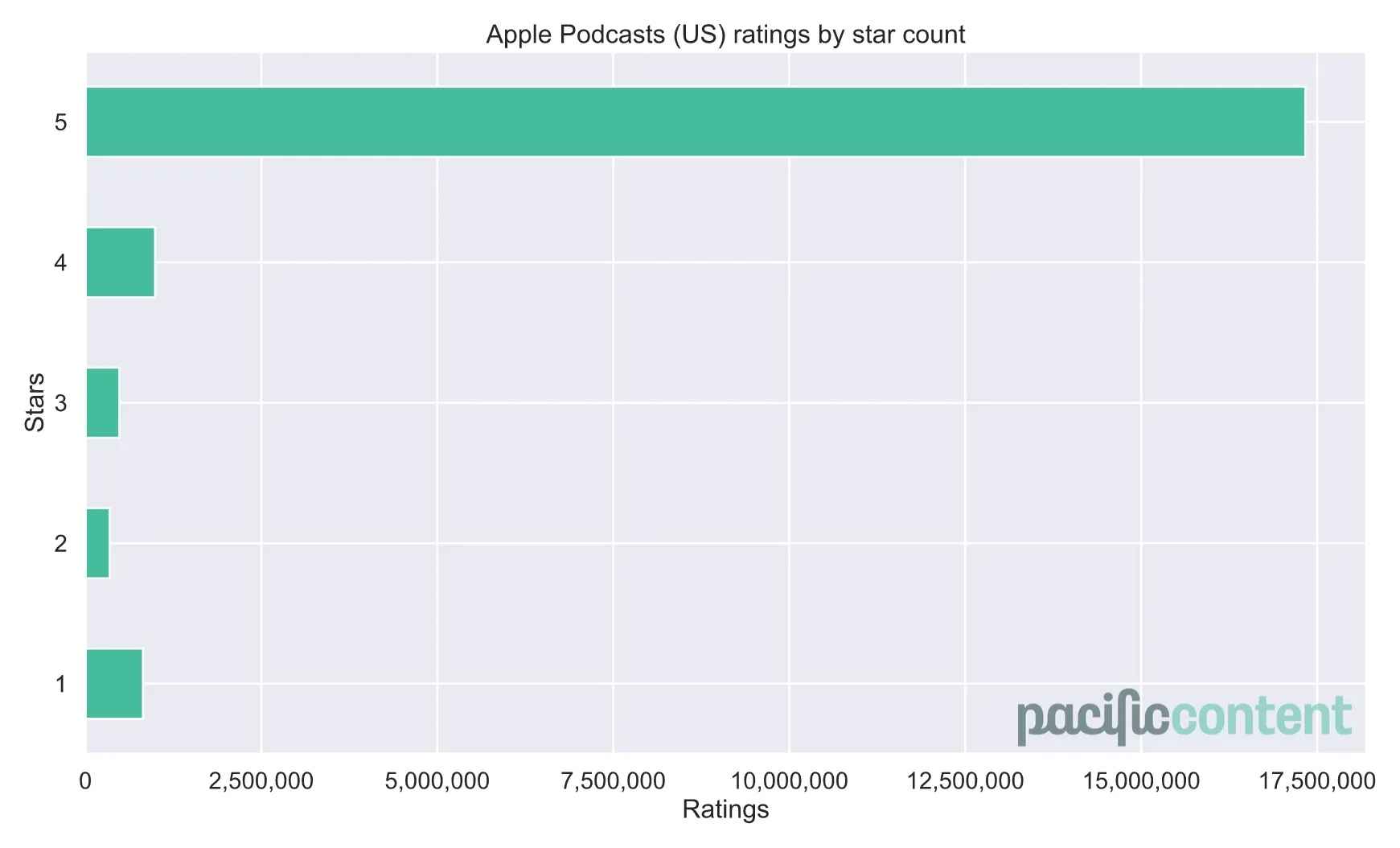
4-star ratings were the second-most-popular choice, followed by 1-star ratings.
If someone takes the time to rate your show in Apple Podcasts, they probably like it, love it… or hate it. But they’re probably not indifferent.
Most podcasts don’t have any star ratings at all
The most-rated shows in my dataset include:
- Crime Junkie (248k US ratings)
- The Joe Rogan Experience (176k US ratings)
- Call Her Daddy (140k US ratings)
- My Favorite Murder (131k US ratings)
- The Ben Shapiro Show (107k US ratings)
But most shows in Apple Podcasts have zero US ratings. Of the 1.3 million shows I analyzed:
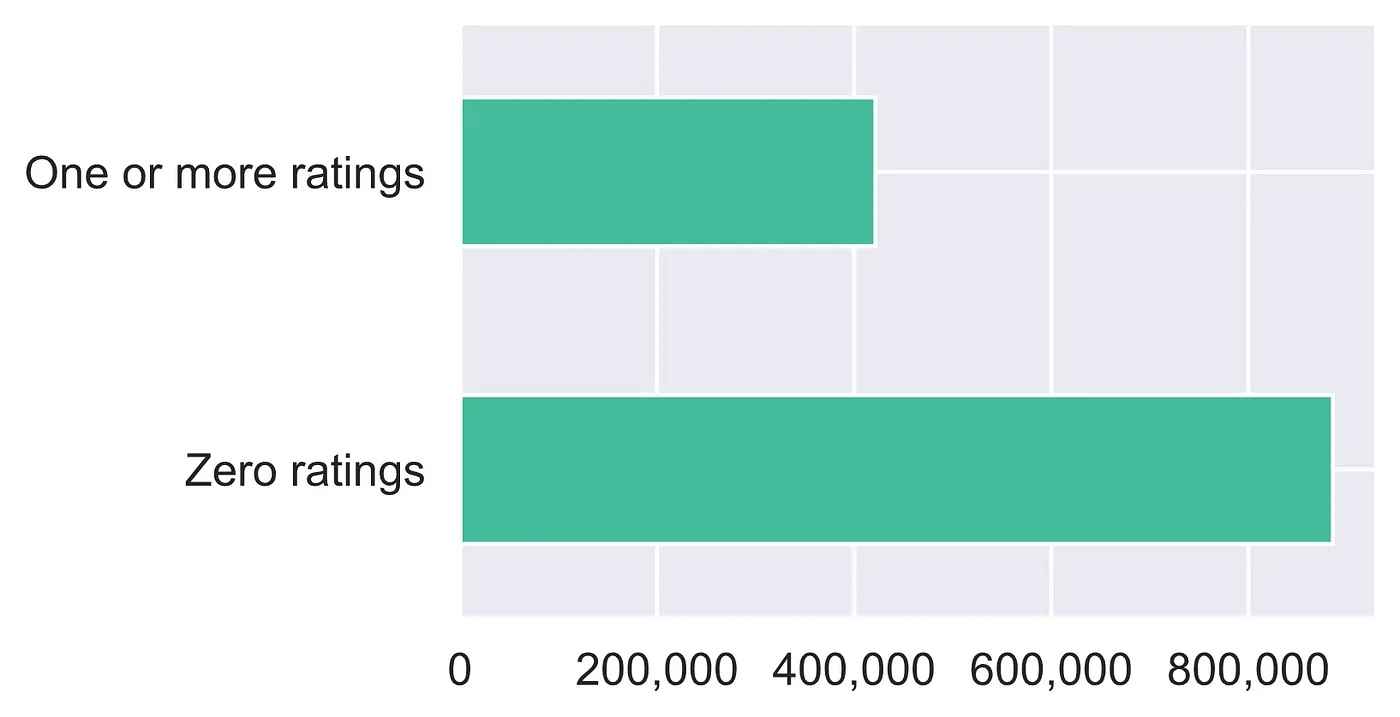
When I removed the large number of shows with zero ratings, I was able to create useful quantile benchmarks. If your podcast has:
- 4 or more star ratings, you have more ratings than 50% of all shows
- 11 or more star ratings, you have more ratings than 75% of all shows
- 34 or more star ratings, you have more ratings than 90% of all shows
- 81 or more star ratings, you have more ratings than 95% of all shows
- 595 or more star ratings, you have more ratings than 99% of all shows
… where “all shows” means “all shows with one or more star ratings.”
The average rating is 4.6 stars
My dataset includes 19,973,595 star ratings. When I added up all the individual stars, I counted 93,591,946.
So the average star rating across all of Apple Podcasts (US) is…
4.6 out of 5.
Not bad.
Serialized podcasts get more ratings
Back in 2017, Apple introduced new tags for podcasters, including <itunes:type>, which allows podcasters to mark their show as episodic or serial.
On average, serialized shows have more star ratings than episodic shows:
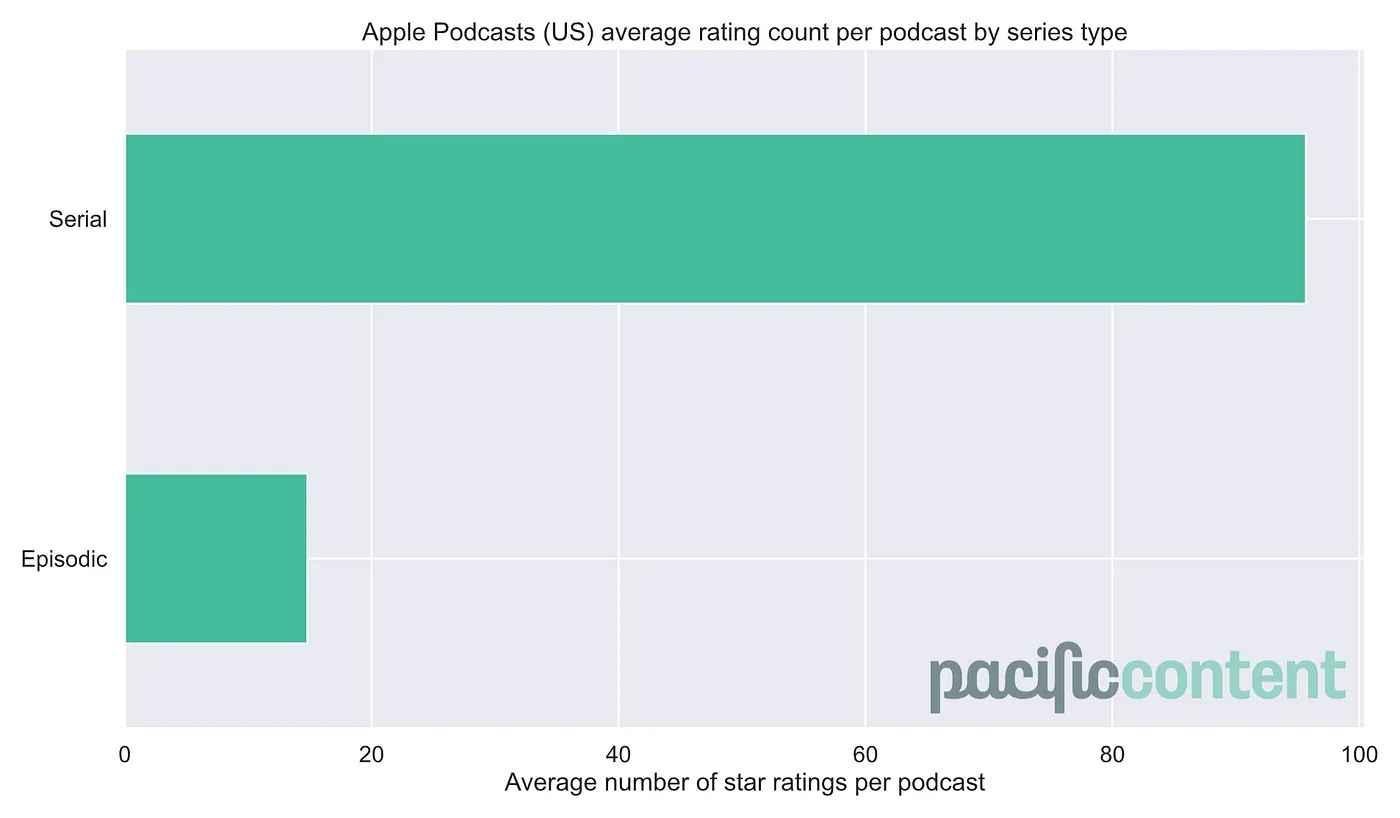
Among serialized podcasts, the most-rated shows include:
- Dr. Death (82k US ratings)
- Revisionist History (53k US ratings)
- Up and Vanished (52k US ratings)
- Dirty John (40k US ratings)
- Cold (37k US ratings)
Explicit podcasts get more ratings 🤬
Podcasters can mark their show as containing “explicit language or adult content” by setting the <itunes:explicit> tag in its RSS feed.
On average, shows marked as explicit get more ratings than “clean” shows:
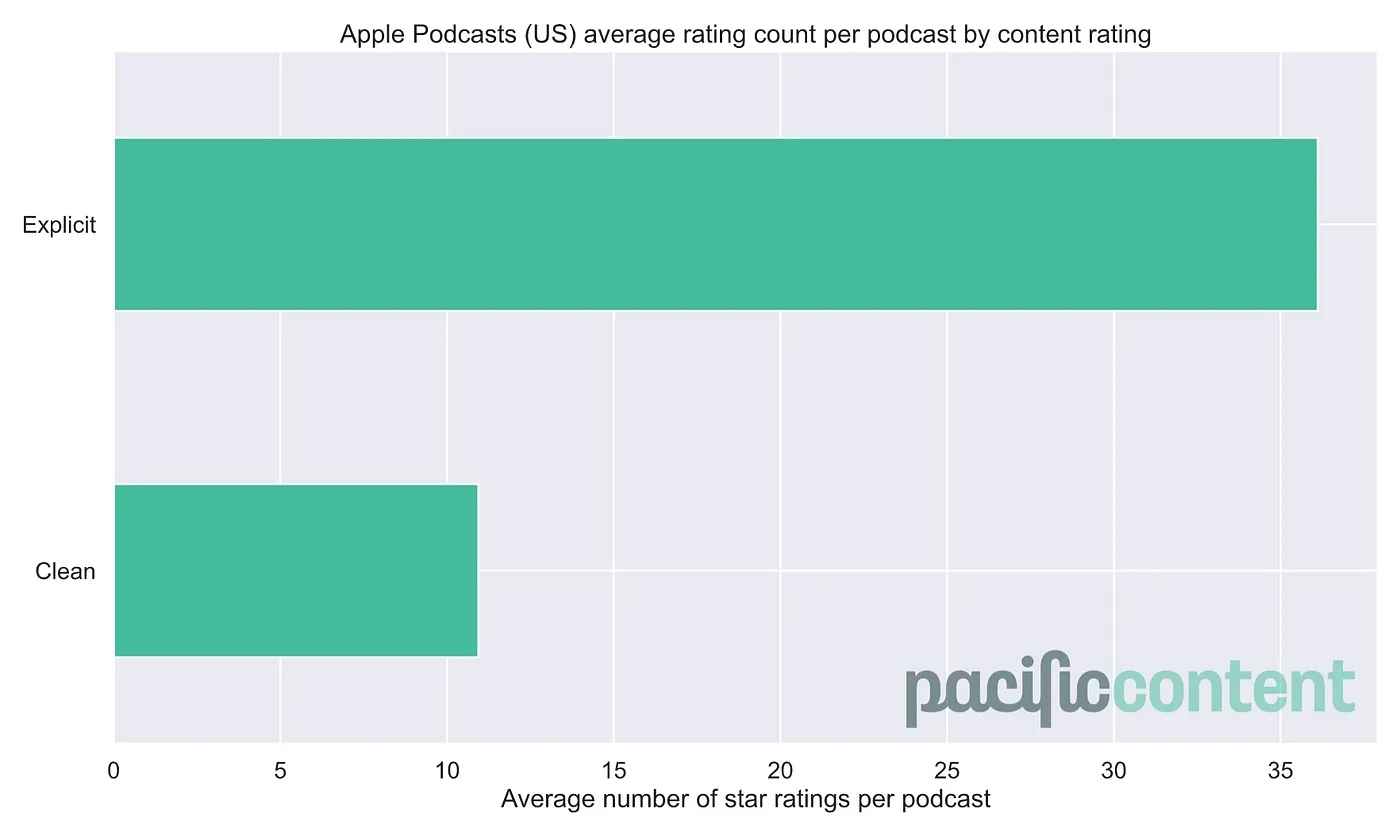
My hypothesis? Shows that contain explicit language or adult content are more likely to provoke strong listener responses — in the form of star ratings.
True Crime podcasts get the most ratings
Finally, I was interested if there were certain categories within Apple Podcasts that get more ratings than others. On average, True Crime shows (on average) tend to garner the most reviews:
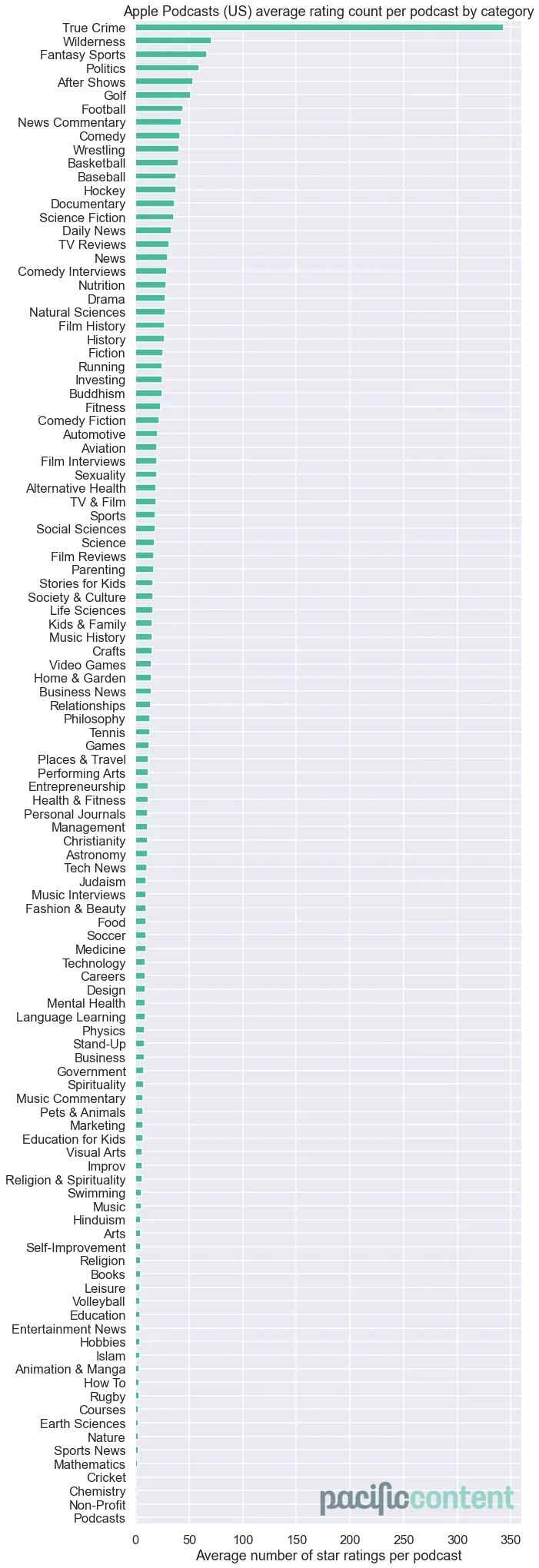
Whew! You made it all the way to the end of that very long chart.
Did you see your show’s category in there? How does your show stack up against the average?
Sign up for the Pacific Content Newsletter: audio strategy, analysis, and insight in your inbox. Once a week.
